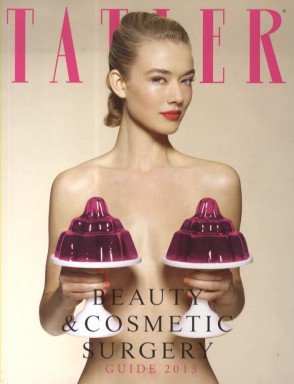R Breast Uplift (Mastopexy)
Overview
Droopiness of the breast is a common legacy of motherhood, nursing and the force of gravity taking their toll, and the effect of pregnancy and a distension of the breasts with milk causes the fibrous bands which support the breasts in their youthful shape to break down and the skin to stretch. With the subsequent shrinking the unsupported breasts settle into the stretched skin and gravity pulls them down. Putting on weight and then losing it can have the same effect. So too does the ageing process, which is why women dislike the appearance of their droopy breasts.
Whilst it is not possible to recreate surgically the natural supporting structure of the breast, it is possible to reshape the breast into one which looks more youthful and feels more firm. The operation is called a Mastopexy. Pleats of surplus skin are removed from underneath the breast, the breast itself is remodelled into a tighter cone and the nipples are repositioned at a higher level so that they lie at the points of the tightened breasts.
Mastopexy can also reduce the size of the areola ( the darker skin surrounding the nipple). If the breasts are too small as well as droopy, their size can be increased during the operation by placing silicone breast implants underneath the tightened breasts. The best results are achieved in women with small sagging breast although breasts of any size can be lifted.
The results may not last as long with heavy breasts. Many women seek mastopexy when their families are complete so if you are planning to have further children it may be a good idea to postpone the operation for though there is no risks for future pregnancy and mastopexy does not usually interfere with breast feeding, pregnancy is likely to stretch the breast again and reduce the effectiveness of the procedure.
There are many different techniques or breast reduction and so the position of the resulting scars may vary a little. There is always a circular scar around the nipple and a second vertical scar running from the lower most point of the nipple to the fold beneath the breast. In most techniques there is also a horizontal scar in the fold beneath the breasts.
The horizontal scar can usually be kept quite short but its length does vary depending on the original size of the breasts. Some techniques of breast reduction avoid the horizontal scar altogether and Mr Riaz will advise you if you are suitable for this at your consultation.
Breast reduction is certainly NOT an operation where one size fits all and Mr Riaz provides a very individual approach to try and achieve a bespoke result for each patient. He is particularly known for his artistic approach to achieving a natural look. He will also be honest in informing you if he feels you are not a good candidate for surgery and carefully explain why this is so.
Mr Riaz uses the dermal wing technique for the uplift procedure. Skin only is excised and all the breast tissue is preserved and it is repositioned above the fold below the breast to achieve a youthful natural appearance.
This technique is similar, as described under breast reduction. All the breast tissue is secured to the chest with non-absorbable sutures and also the area of dermis below the nipple/areolar complex to the infra-mammary fold is plicated to prevent future stretching of the skin and recurrence of saggy appearance.
KEY FACTS:
Removes excess fat and skin from the breasts
Results in more attractive breasts
Reduces self consciousness
Scars will always be there but will become less prominent over time
Women often cannot breastfeed after this surgery
Nipples become less sensitive
Unless your body size fluctuates, they often do not change
Procedure done under general anaesthetic















